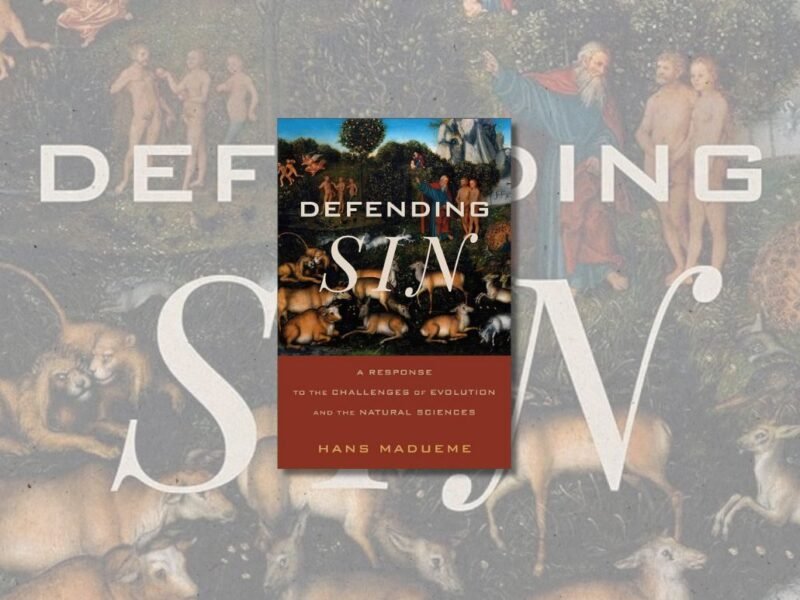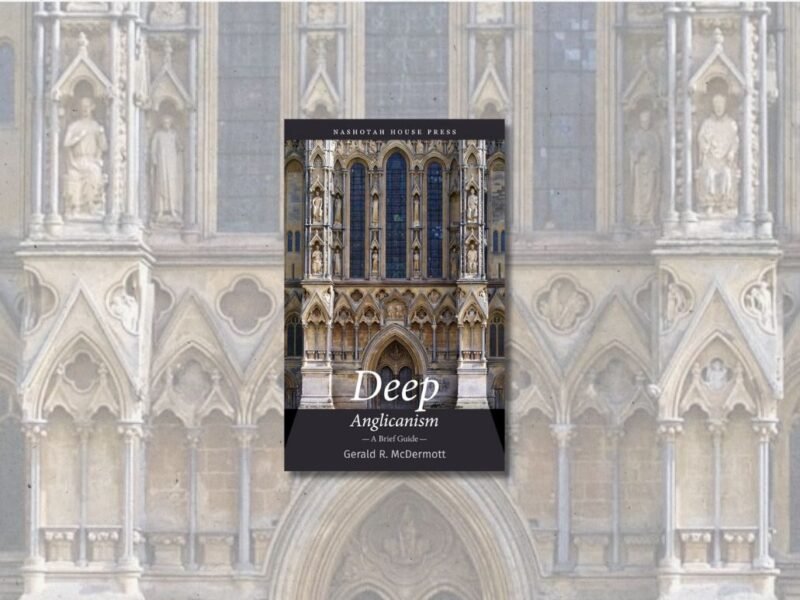The Sacramental Vision of Edward Bouverie Pusey. By Tobias A. Karlowicz. New York: T&T Clark, 2021. 232 pp. $115 (cloth).
To call a work “revisionist” usually suggests that it seeks to overturn a commonly held understanding of its subject in favor of an interpretation that is implausible or strained, often in the service of some insidious agenda. Alternatively, “revisionist” can be a term of praise for a work that successfully reevaluates its subject, digging up calcified layers of established, but ill-founded, consensus in favor of a more solidly based assessment.
Tobias A. Karlowicz’s The Sacramental Vision of Edward Bouverie Pusey is, in my view, revisionist in the positive sense. It responds to the notion that Pusey’s theology—typically classified as either “‘conservative’, simply defending an established theology,” or “essentially Roman Catholic” (10)—is unoriginal and therefore of little contemporary interest. Far from it, Karlowicz argues: “Pusey, despite a century and more of neglect, is in fact a deeply original theologian, who, in his own right, merits sustained engagement within contemporary theology” (4). More specifically, what makes Pusey’s theology relevant today is “the ‘sacramental vision’ which he drew from the Fathers,” because it “addresses very current questions in theology and anticipates similar projects of réssourcement, aimed at the same problems, in twentieth- and twenty-first-century theology” (5).
Chapter 1 “addresses the question of Pusey’s development” and explores his relationship to the “older high church tradition in the Church of England.” Chapter 2 “[outlines] his…engagement with Patristic allegory, from which he drew the elements of his renewed ‘sacramental vision’ of creation’s participation in, and manifestation of, Christ.” The remaining chapters “[examine] the way in which this ‘sacramental vision’ reshaped the theology Pusey inherited from the high church tradition,” discussing Pusey’s theology of baptism (chapter 3), the Eucharist (chapter 4), sacrifice and the atonement (chapter 5), and sacrifice and the sacraments (chapter 6) (12).
To understand how Pusey’s theology might resonate with contemporary concerns, it is important to know what he was reacting against. In 1825, high churchman Hugh James Rose “delivered a series of lectures at the University of Cambridge, published as The State of the Protestant Religion in Germany” (38). Rose “attributed the corruption of German theology to the lack of adequate formularies (specifically, the absence of a uniform liturgy and the neglect of too-detailed confessional documents) and the lack of episcopal ‘controul’ to enforce doctrinal compliance” (39). Pusey responded in 1828 with An Historical Enquiry into the Probable Causes of the Rationalist Character Lately Predominant in the Theology of Germany, where he argued that, to the contrary, “Christianity had failed in Germany” precisely because of an over-emphasis on confessional rigor. Karlowicz describes Pusey’s view this way: “Intellectually, the narrowness and rigidity of confessional Lutheranism drove away those who could not easily fit within it; spiritually, the emphasis on polemical controversialism reduced the faith to an intellectual exercise disconnected from practical Christianity” (39‒40).
It was this problem that Pusey sought to address in turning to the allegorical hermeneutic of the Fathers, a hermeneutic he believed could “reintegrate faith and life” (63). The insight of allegorical interpretation Pusey found so potent was that “images or surface meanings point to deeper, veiled meanings; although the surface meanings are intended, the veiled meaning is, in fact, primary: every part of creation is, in its deepest significance, an image which speaks of God, though God is himself always beyond the image” (70). Indeed, Pusey went on to hold that “the concrete image, with its richness of meaning, is the indispensable, sole means of revelation” (84), a revelation God brings to us rather than us arriving at God: “For Pusey, the essence of revealed religion, especially the religion of the incarnation, is that we do not comprehend God; rather, God makes himself known to us. Thus the life of the Church, the life of the sacraments and the language of Scripture ‒ the concrete, tangible aspects of religion, by which God makes himself known ‒ cannot be set aside” (85, italics original).
Crucially, on Pusey’s account it is in living out “the life of the Church, [and] the life of the sacraments” (85) that we can hope to attract people to Christianity, rather than in “abstract ‘direct’ discourse” (72). This is because “the predisposition to belief or unbelief is psychologically prior to intellectual inquiry” (69), and “images may ‘grasp’ us where arguments do not” (70). In this way, a “holistic approach to faith” can be recovered from its “dis-integration…into disconnected and increasingly atrophied emphases on apologetic theology and moralistic practice” (12).
This desire to reintegrate faith and practice shaped Pusey’s theology of the sacraments because they are, in their very nature, self-revelatory, concrete (in the elements of water, bread, and wine) images of God’s grace. As Karlowicz puts it, “It is above all in the concreteness of the sacraments that the doctrines of salvation touch the Christian life” (89, italics original). I lack the space to discuss the details of Pusey’s theology of the sacraments here, but it is worth noting that Karlowicz extensively compares Pusey’s thought to that of Daniel Waterland and John Calvin, observing their similarities as well as their differences, and maintaining that “Pusey’s theology is deeply rooted in the earlier high church tradition, despite the extent to which he reshapes it” (188). Karlowicz closes the book with this observation while also reiterating the ongoing relevance of Pusey’s theology for today, as evidenced by its correspondence with more recent movements such as nouvelle théologie and Radical Orthodoxy.
Regarding Karlowicz’s case for Pusey’s contemporary relevance, there are two points I’d like to make. First, Pusey’s critique of “formularism” (Pusey’s word) and its “reductionist narrowing of theology” (76‒77) could be taken as a challenge to Anglicans today, in that many contemporary writings on the subject of Anglican renewal—e.g., those of M. H. Turner, Gillis Harp, Peter D. Robinson, and myself— seem to suggest precisely the kind of focus on formularies that Pusey deems inadequate and bound to fail. However, it should be noted that Pusey’s critique was aimed specifically at Lutheran formularies, particularly the Formula of Concord (39n95). The Anglican Articles were, in Pusey’s view, “brief and allowed for some breadth of interpretation, while the Formula is detailed, requiring assent to each particular” (45). Therefore, to emphasize the importance of the Anglican formularies is not, in itself, to fall prey to “formularism” (although just which Articles allow for “some breadth of interpretation,” and how much, might be a point of dispute).
Second, I emphatically agree with Karlowicz that Pusey’s opposition to rationalism—and especially the idea that “images may ‘grasp’ us where arguments do not”—should be taken up today, for rationalism is just as false and pernicious in Christian circles now as it was when Pusey was alive. At the same time, I must raise a caveat about Karlowicz’s account of what he calls Pusey’s “psychology of faith” (68). As presented by Karlowicz, Pusey thinks that we perceive images on an “affective” (68, 69) level. Moreover, the affective is equated with the “aesthetic” (68), as well as the “pre-intellectual aspect of our minds” (69). In short, Karlowicz seems to think Pusey upholds “the priority of faith and/or the affections over reason” (190), alongside nouvelle théologie and Radical Orthodoxy.
Having not read the relevant texts from Pusey myself, I am not in a position to judge whether Karlowicz accurately captures Pusey’s perspective on the subject. Either way, to identify that which is aesthetic or imaginative as outside the realm of intellect is a mistake. For if images are merely affective, then images alone could never provide any basis for believing Christianity is true—by necessity, one would have to follow up an imaginative experience, no matter how powerful, with a rational “intellectual inquiry” in order to confirm its truthfulness.
In reality, imaginative or “aesthetic” experiences are intellectual because the intellect is broader than discursive reason. The encounter with an image, in all its beauty, is an encounter with God. Pusey himself seems to recognize this in holding that images are a “means of revelation” (84). If images are a “means of revelation,” we cannot possibly fail to attain some knowledge of God, however incomplete, through them. Knowledge falls within the purview of the intellect, and it is therefore inaccurate to say our experience of images is merely affective or pre-intellectual. To the extent that Karlowicz represents Pusey as holding such a view, this might be a slight misstep in his presentation of Pusey.
This minor weakness aside, Karlowicz’s work is a fascinating reappraisal of Pusey’s theology and its legacy, well grounded in Pusey’s own works rather than secondary treatments alone. It will undoubtedly be of interest to Anglicans who wish to learn more about Pusey’s thought, and especially how it relates to the old high church tradition he inherited. Beyond this, Pusey’s insights deserve to be weighed anew in light of our own circumstances today, and in effectively making this case Karlowicz’s book is a commendable achievement.






'Book Review: “The Sacramental Vision of Edward Bouverie Pusey”' has no comments
Be the first to comment this post!